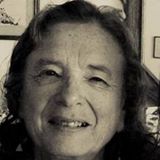This remarkable paper is published by the San Francisco office of the American Friends Service Committee http://www.thestreetspirit.org/
It is sold on the street by homeless people, for a dollar, which the seller gets to keep. He or she thus has an honorable way to get funds.
The paper features articles, interviews, poems and artwork which mostly concern the homeless- regarding police brutality, hate crimes, vagrancy laws, substandard hotels, etc. For the past year, Street Spirit has also covered the Occupy movement in depth.
The March 2012 issue is largely devoted to how nonviolent strategy can make social change happen. It addresses the conflict within the Occupy movement between proponents of nonviolent resistance and people advocating violent rebellion, or "diversity of tactics", in a series of articles.
http://www.thestreetspirit.org/discovering-the-unexpected-power-of-nonviolence-street-spirit-interview-with-erica-chenoweth-4/ by Terry Messman is well worth reading. Chenoweth co-authored a book with Maria J. Stephans entitled "Why Civil Resistance Works: the Strategic Logic of Nonviolent Conflict". Chenoweth came to the project as a proponent of armed uprising and was amazed to find, in a study of 323 social-change campaigns, that " during the period of 1900 to 2006, nonviolent resistance campaigns are about twice as effective as violent ones in achieving their goals. We also found that these trends hold even where most people expect nonviolent resistance to be ineffective -- for instance, against dictatorships and highly repressive regimes."
The article is studded with helpful insights, such as "far greater numbers of pepole from more diverse parts of society joined nonviolent campaigns than violent ones." And "when nonviolent movents overthrow an unjust regime, the victorious resistance groups are far more likely to establish democracies and protect human rights, than their violent counterparts. It also gives case examples such as Burma in the late 1980s, the Filipino overthrow of Marcos, and Egypt's ousting of Mubarak last year.
The front page of Street Spirit also features a second interview, with George Lakey, longtime nonviolent activist and trainer. The Occupy Movement Stands at the Crossroads: Street Spirit Interview with George Lakey Lakey teaches peace studies at Swarthmore College, where he is amassing the Global Nonviolent Action Database, an invaluable resource for social change activists. He is a strong advocate for nonviolent resistance, arguing that violence on the part of protestors diverts attention from brutality by the state, and erodes the public support that is essential for social change. He's hopeful that the Database will prevent people from re-inventing the wheel, and enable the Occupy movement to learn from past mistakes.
A case example of how violence undercuts the power of a movement is given in the article http://www.thestreetspirit.org/lessons-of-seattle-for-today%E2%80%99s-occupy-movement/ Writer Ken Butigan, who was there, tells how a people's anticorporate movement was reframed as "the battle of Seattle" because of the actions of a few vandals.
Last but not least, George Lakey describes, in http://www.thestreetspirit.org/how-a-nonviolent-struggle-by-workers-and-farmers-in-sweden-and-norway-broke-the-power-of-the-1-percent/
a situation remarkably similar to the one we face in the US in 2012. During the 30's, the 99% in these Scandinavian countries suffered unemployment, foreclosures, increasing poverty and repression engineered by the 1%. This oligarchy controlled the governments, which were nominally electoral democracies, and passed laws that upheld economic inequality.
Lakey describes how people's movements in both countries were able to oust the people who were directing those governments, and create true democracies which continue to flourish. A key step was convincing those entrusted with repression, the armed forces and police, that their interests lay with the 99%.
(Note: You can view every article as one long page if you sign up as an Advocate Member, or higher).





